This year, Arab-American Heritage Month and Ramadan are the same month. This is exciting because many Arab-Americans celebrate Ramadan! But it’s also a good chance to explain the difference between ethnicity, religion, and culture.
Famous Arab-Americans


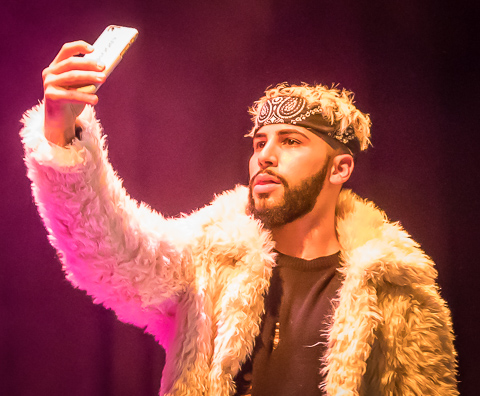

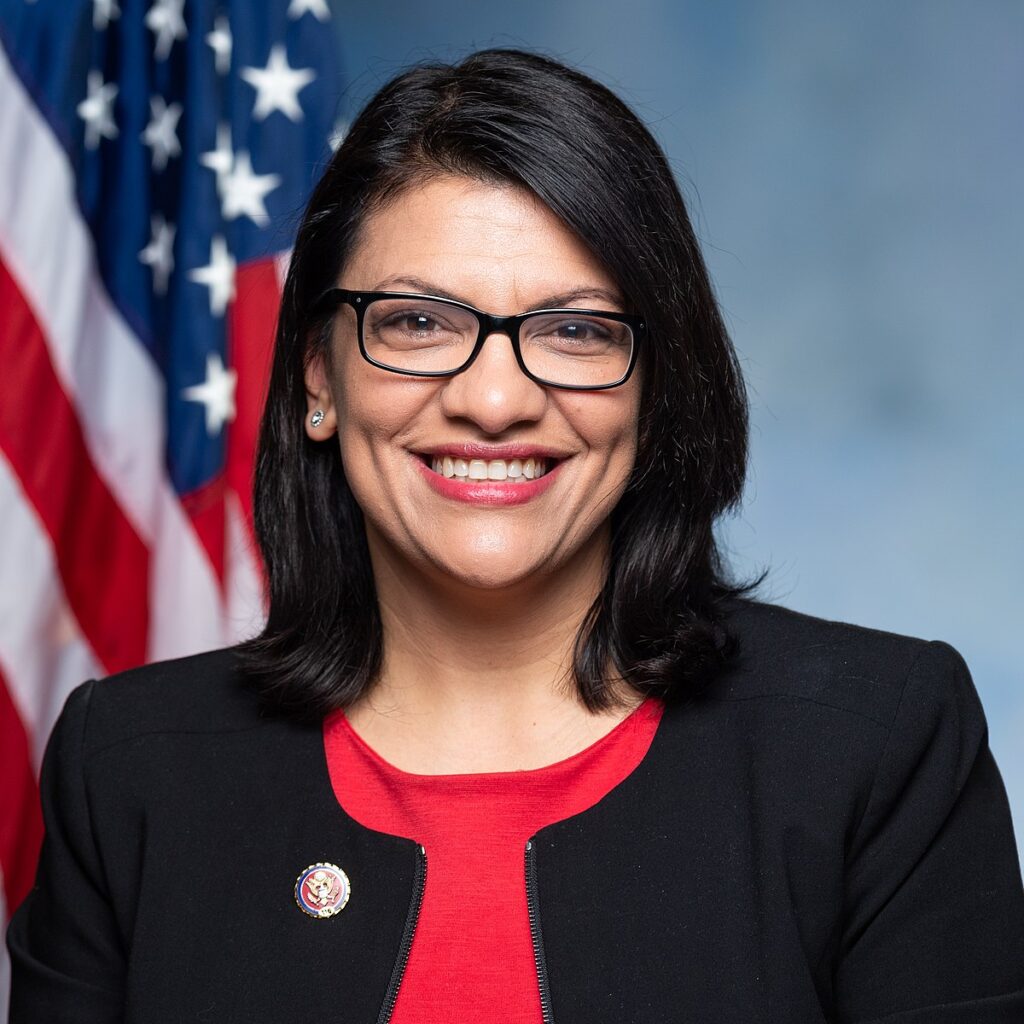
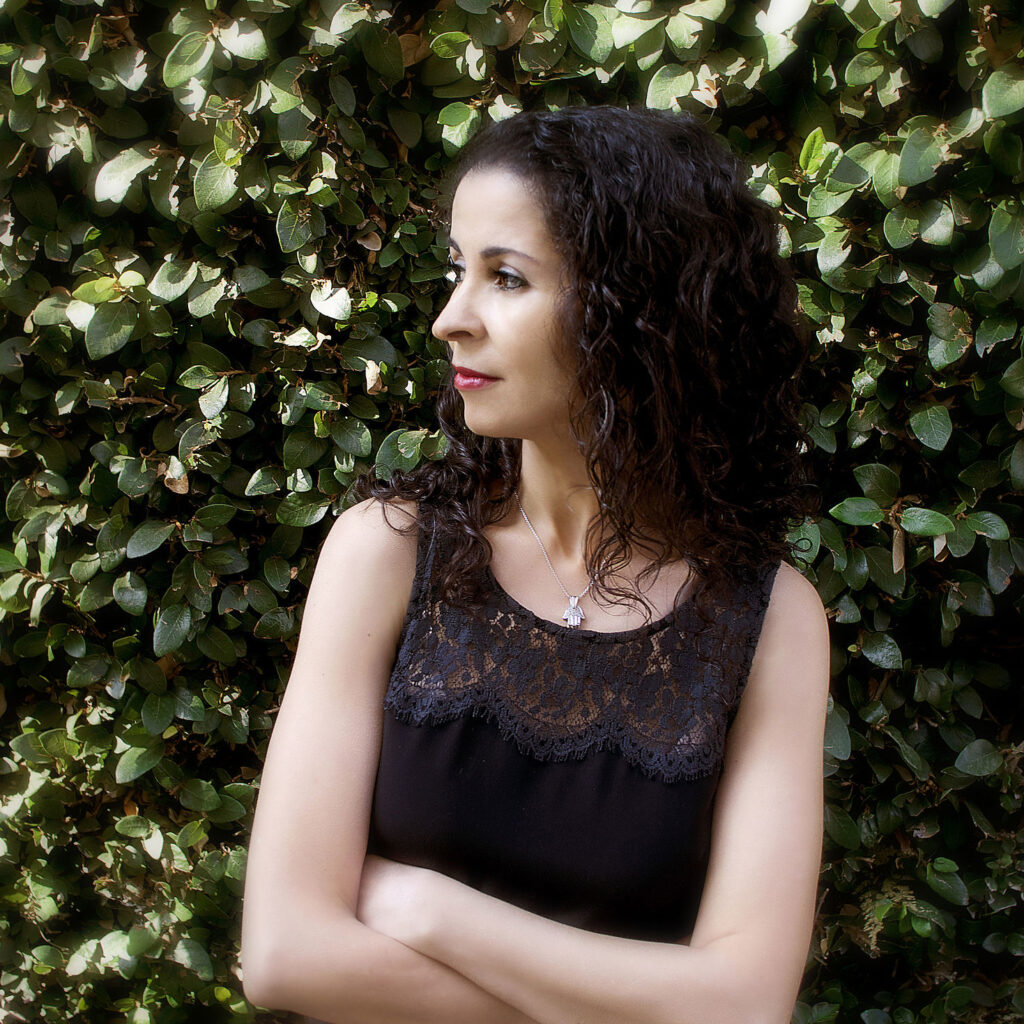
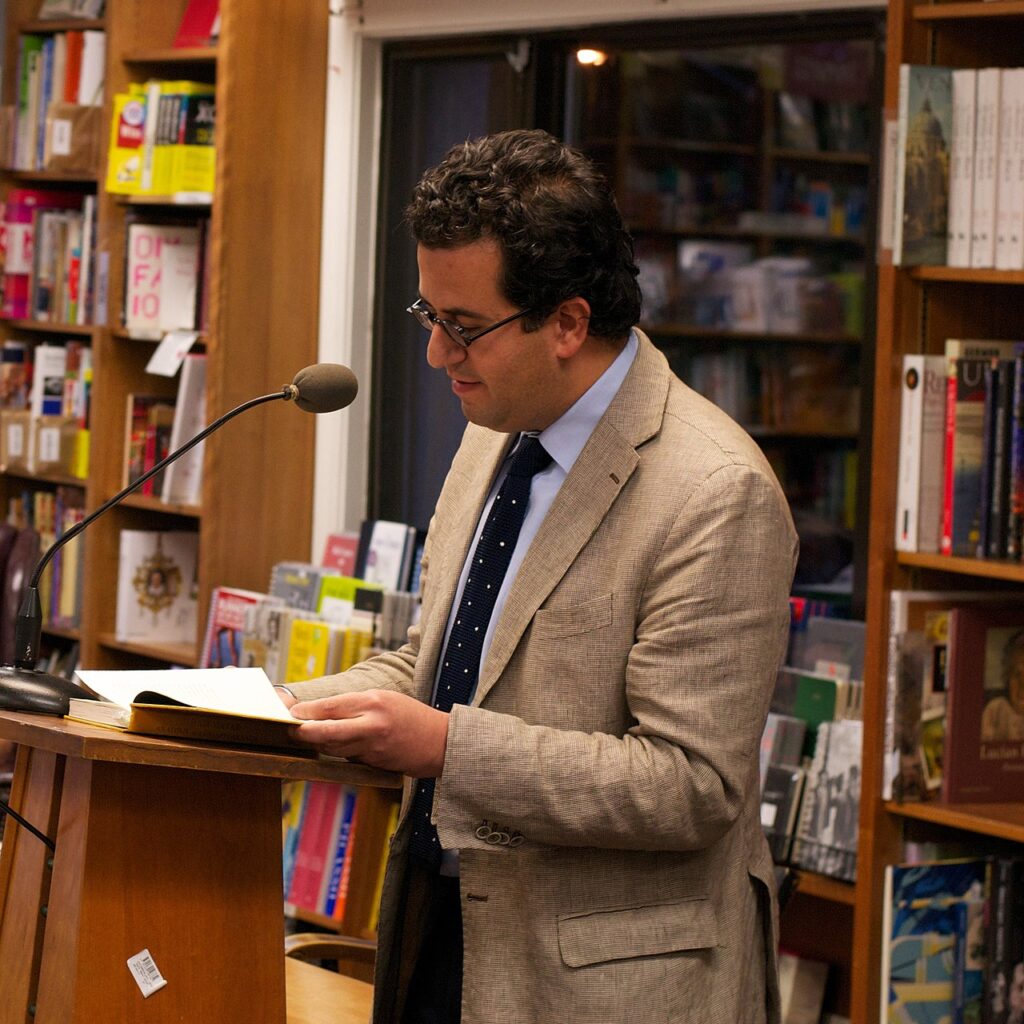


More famous Arab-Americans: https://en.wikipedia.org/wiki/List_of_Arab_Americans
Arab-American Heritage Month

Arab-American Heritage Month was first recognized by the federal government of the USA in April 2021, although the bill to create the holiday has not been officially passed by the U.S. Congress. The heritage month was first recognized by the Biden administration, and it is also recognized by the U.S. Department of State and the U.S. Department of Homeland Security.
The idea of an Arab-American identity probably would have seemed preposterous 100 years ago. Historically, many Arabs in the USA have simply “passed” as their Caucasian neighbors in order to qualify for naturalized citizenship (which was mostly restricted to “white” people until after World War II). This may be why the U.S. Census does not have an Arab ethnicity category. (The most recent United States census officially recognized five racial categories – White, Black or African American, Asian, Native American/Alaska Native, and Native Hawaiian/Pacific Islander – as well as people of two or more races.) Arabs in the USA have never been a relatively large presence, but even during the era of overt racism and legal discrimination, they also weren’t generally seen as an “inferior race” because part of their homeland was the birthplace of Christianity. From their first major migration wave to the USA in the 1880s until the beginning of the 21st century, Arab Americans maintained a peaceful, albeit uneasy, status in America.
The need for a historical recognition of Arab Americans and the complex history and cultures of the Arab region became clear after the 9/11 attacks on the USA in 2001. The 9/11 attacks, which were perpetrated by a small group of extremist Muslim Arabs from Saudi Arabia and other western Asian countries, led to many other Americans discriminating against anyone who “looked” Muslim and/or Arab, including other American citizens who happened to be Muslim and/or Arab and random people who were mistakenly perceived as such. The public’s reactionary broad overgeneralization was very harmful to innocent civilians. Many people were suddenly hostile to each other, and some people even attacked Arab Americans and blamed them for the foreign extremists’ behavior. (To this day, Islamophobia – an irrational fear or hatred of Islam and Muslims – is a major issue in the USA.)
! ! Important ! !
Arab = Ethnicity (民族性)
Muslim = Believer in Islam (イスラム教徒) ~ Islam = Religion (宗教)
Not all Muslims are Arab
The religion of Islam began in what is now Saudi Arabia (in a city called Mecca) circa 610 CE. It spread quickly across the region, uniting many tribes within about 20 years. Although its original followers were mostly Arab, other early followers were Bedouin, Kurdish, Turkmen, Assyrian, or other ethnic groups in western Asia. Over time, due to trade, migration, and conflicts, the religion spread northward and eastward to other parts of Asia, and westward across northern Africa, thereby including people of many ethnicities. Today, only about 20% of Muslims are Arab, and there are estimated to be 1.9 billion Muslims across the world (more than 20% of the world’s population!) Muslim-majority countries include many Arab-majority countries, but also countries with different ethnic majorities, such as Indonesia, Sudan, and Somalia.

In addition, the Middle East itself is incredibly ethnically diverse, which means that Islam is practiced by non-Arabs even within Arab-majority countries. (Below: Yellow = Arab)

Not all Arabs are Muslim
The Middle East has a long history, starting as the “fertile crescent” (the birthplace of crop farming/farm animal domestication/agrarian practices, and thus civilization as we know it) about 10,000 years ago. It is a crossroads of many ethnicities and cultures, and therefore has a long history of ethnic, cultural, and religious exchange, as well as conflict.
Quick History of the Middle East
By EmperorTigerstar
The first group of people to be called “Arab” appeared in (what is now) western Saudi Arabia in about 1000 BCE, and may have been rural Bedouin tribespeople. Although this is the same location where Islam began, it would be another 1600 years before Islam existed, meaning that Arab peoples have many other historic religions. However, due to the strong political and cultural enforcement of Islam in many Arab-majority countries, most of these older religions no longer exist or are practiced in secret. Today, about 93% of Arabs are Muslim.
Nevertheless, it is well-known that the Middle East hosted the birthplace (and spread) of Zoroastrianism, Judaism, Christianity, and Islam, as well as syncretic religions that draw from these four and local beliefs. In general, most Arabs practice a version of one of the Abrahamic faiths: Judaism (circa 6th century BCE), Christianity (circa 33 CE), Islam (circa 610 CE), Druze (circa 1017 CE), or Baha’i Faith (circa 1844 CE). However, religions such as Sikhism, Yazidism, and Zoroastrianism are also present in small populations. Within Islam, there are various sects, including Sunni, Shia, Ibadi, and (according to some people) Shabak. Note: Wahhabi/Salafi followers consider themselves to be a Sunni sect, but many other Sunni consider them to be separate.
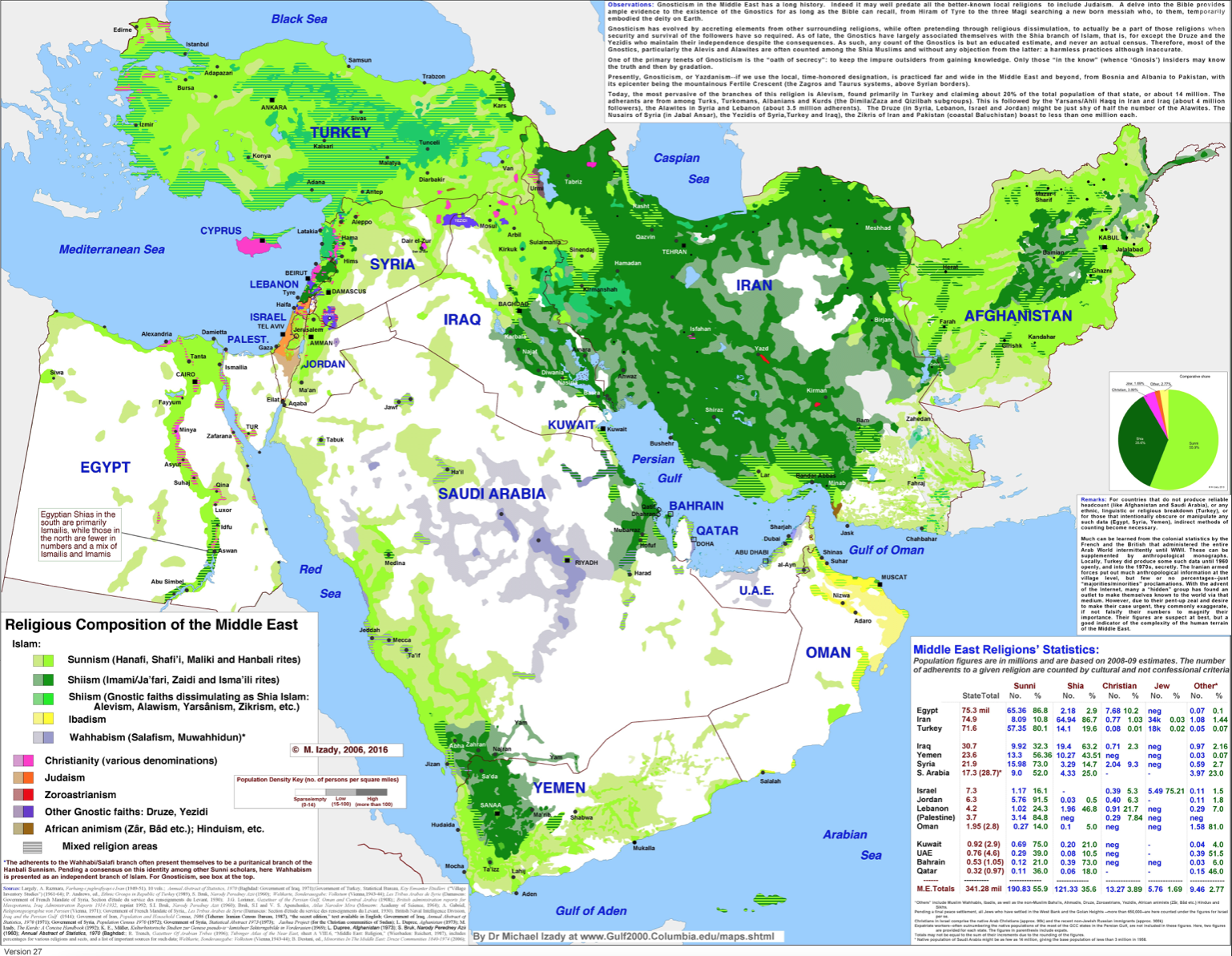
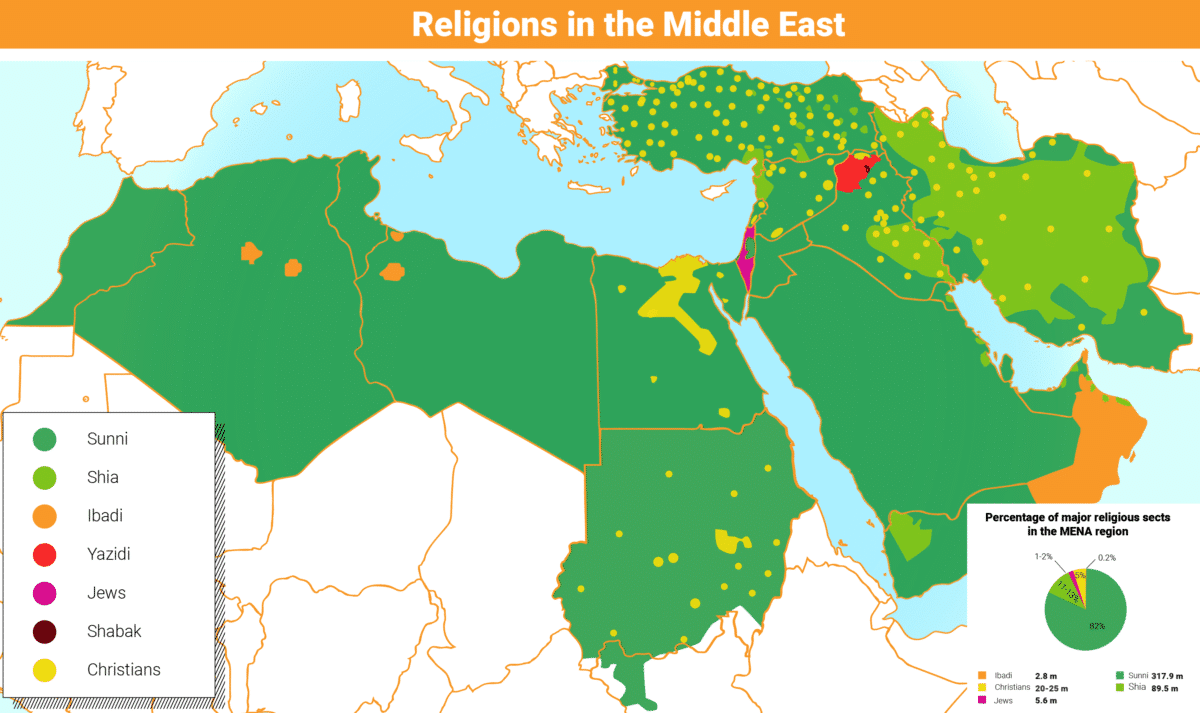
Christian Arabs provide a unique perspective on the geopolitics of the Middle East. In certain Arab-majority countries (Saudi Arabia, Afghanistan, Yemen, Iran), they are religiously persecuted because it is effectively illegal to practice Christianity or any religion that is not Islam. In other countries, such as Qatar, Libya, or Pakistan, the situation is more complicated. In these countries, social persecution is used to repress Christians, rather than direct state-sponsored persecution. Meanwhile in Israel, Christian Arabs have been ethnically persecuted and treated as “squatters” since the re-foundation of the Jewish state, but they also have access to more modern civil rights (religious, educational, sexual, and other cultural freedoms) and are among the safest from socio-religious violence or state-sanctioned religious violence (i.e., it’s culturally and legally acceptable to be Christian in Israel). Due to the ongoing conflicts between Christian and Muslim Arabs, fewer than 8% of Arabs are Christian, but 63% of Arab-Americans are Christian.
This Business Insider article provides a nuanced perspective on the Middle East, but it also blatantly introduces a problematic talking point at the end: Many of the wealthiest businesspeople around the world have no value or respect for local Middle Eastern people or cultures, and they care only about the value of the oil in the land. This money-focused view is incredibly offensive and causes many problems in international policy discussions.
“These 7 Maps Explain the Middle East” – Business Insider
What is Ramadan?
Ramadan is the name of the 9th month in the Islamic (lunar) calendar, and it is an Islamic holiday. This year, the month of Ramadan is from late March to late April. The month is considered to be holy to Muslims, as it is the month in which the first verses of the Qur’an were revealed to the Prophet Muhammad. That day is celebrated as Lailat al-Qadr. Other events that are sacred to Islam also happened during this month.
During the month of Ramadan, all Muslims who have reached puberty (思春期から) must fast (断食する) during daylight, unless they meet specific conditions:
- They are traveling
- They are menstruating (月経中), pregnant (妊娠中), or breastfeeding (母乳育児)
- They are temporarily or chronically ill
- They would have bad health effects from fasting (例: 摂食障害または糖尿病)
The daytime fasting is an exercise in humility and solidarity with the less fortunate – it represents the suffering of people who experience poverty and hunger every day.
Usually, people will eat a light night meal (iftar) followed by the last prayer of the day and then a larger meal, and they will wake up before the sun rises for an early morning meal (suhoor) before the first prayer of the day. Popular foods during the month of Ramadan include avocado, egg, peanut butter, cheese, tofu, bok choy, watermelon, and other fruits for suhoor (early morning – energy and hydration for the day) and fried rice, eggplant pasta, okra stew (“bamia”), and carbonated drinks to aid digestion for iftar (first evening meal). Traditionally, iftar starts with eating dates to commemorate the food that the Prophet Mohammed used to break his fast.
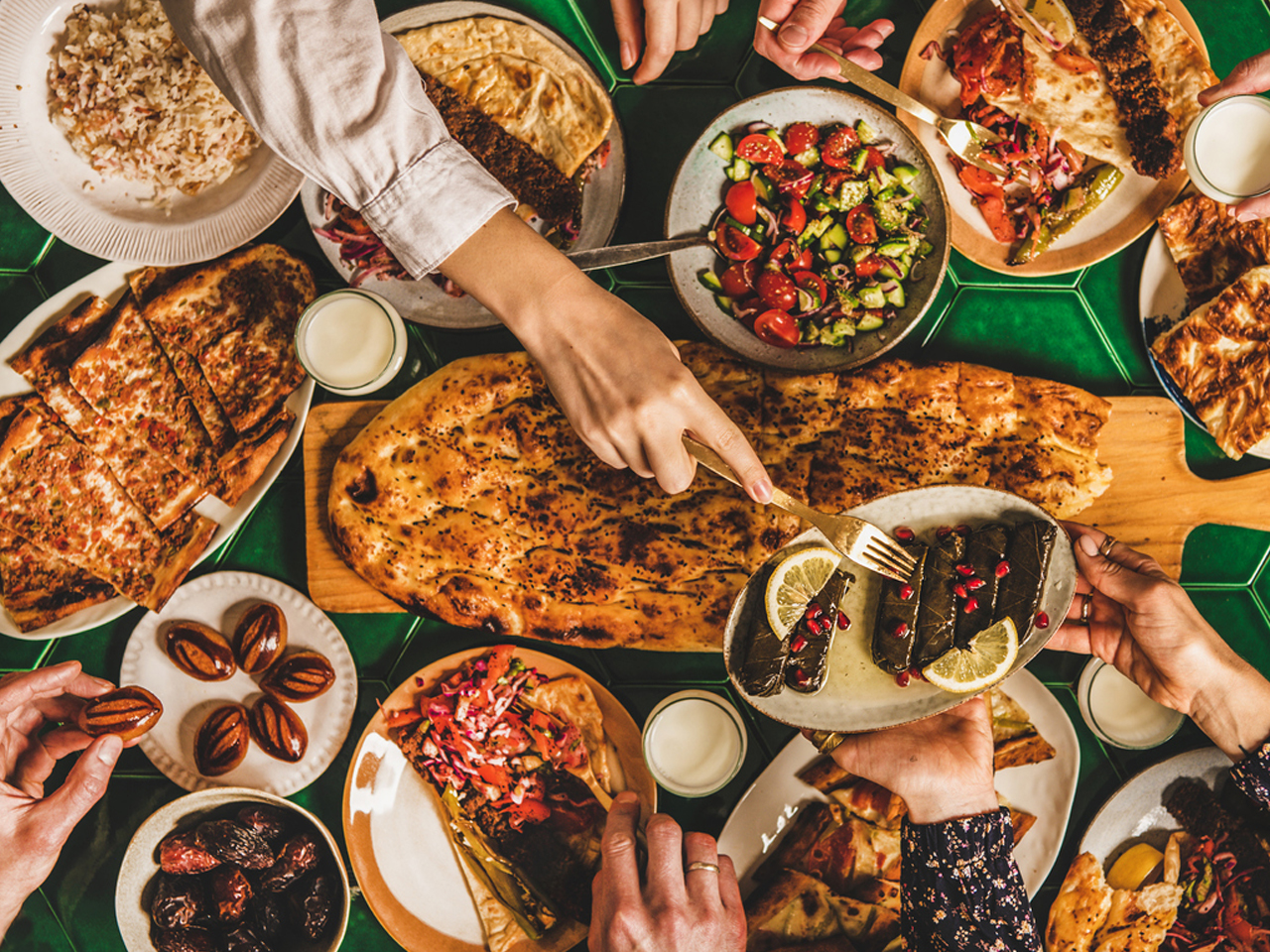
When the month of Ramadan has finished, there is a celebratory feast called Eid al-Fitr.
There are five principles that Muslims believe to be required by God, known as the “Five Pillars of Islam”. Observing the fast during the month of Ramadan is one of the five pillars. The other four pillars are faith, prayer, charity, and making the pilgrimage to the holy city of Mecca. As a result, giving to charity is also a common practice during Ramadan, as is performing an extra nighttime prayer known as Tarawih (تراويح) and trying to read the entire Qur’an during the month of Ramadan. The pilgrimage, however, is reserved for a different month of the year for various reasons – one, traveling during Ramadan would disrupt the fasting practice, and two, the pilgrimage is associated with the last month of the Islamic calendar, Dhu al-Hijjah. The pilgrimage is known as “the Hajj”.
If you want to wish someone well, you can say “Ramadan Mubarak”, which means “Blessed Ramadan”, or “Ramadan Kareem”, which translates as “Generous Ramadan”.
